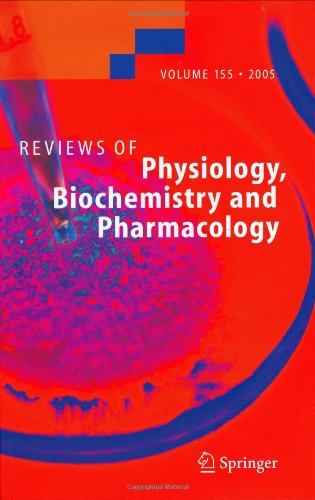Reviews of Physiology Biochemistry and Pharmacology 155 1st Edition by Susan Amara, Ernst Bamberg, Sergio Grinstein, Steven Hebert, Reinhard Jahn, Lederer, Roland Lill, Atsushi Miyajima, Murer, Stefan Offermanns, Schultz, Schweiger 3540281924 978-3540281924 by S. G. Amara 3540281924 instant download after payment.
Reviews of Physiology Biochemistry and Pharmacology 155 1st Edition by Susan Amara, Ernst Bamberg, Sergio Grinstein, Steven Hebert, Reinhard Jahn, Lederer, Roland Lill, Atsushi Miyajima, Murer, Stefan Offermanns, Schultz, Schweiger - Ebook PDF Instant Download/Delivery: 3540281924, 978-3540281924
Full download Reviews of Physiology Biochemistry and Pharmacology 155 1st Edition after payment

Product details:
ISBN 10: 3540281924
ISBN 13: 978-3540281924
Author: Susan G. Amara, Ernst Bamberg, Sergio Grinstein, Steven C. Hebert, Reinhard Jahn, W.J. Lederer, Roland Lill, Atsushi Miyajima, H. Murer, Stefan Offermanns, G. Schultz, M. Schweiger
The eukaryotic translation machinery must recognize the site on a messenger RNA (mRNA) where decoding should begin and where it should end. The selection of the translation start site is generally given by the ?rst AUG codon encoding the amino acid methionine. D- ing initiation soluble translation initiation factors (eukaryotic translation initiation factors [eIFs] in eukaryotes and prokaryotic translation initiation factors [IFs] in prokaryotes) bind the mRNA, deliver the initiator Met-tRNA, and assemble to form a complete 80S ribosome from the 40S and 60S subunits. By progressing along the mRNA in the 5 -to-3 direction the ribosome decodes the information and translates it into the polypeptide chain. During this process, repeated delivery of amino-acyl tRNA (aa-tRNA) to the ribosome, peptide bond formation, movement of the mRNA, and the growing peptidyl-tRNA is mediated by both soluble elongation factors (eukaryotic translation elongation factors [eEFs] in euka- otes and prokaryotic translation elongation factors [EFs] in prokaryotes) and the activity of the ribosome. The ?nal step in the translation process occurs when one of the three t- mination codons occupies the ribosomal A-site. Translation comes to an end and soluble release factors (eukaryotic translation termination factors [eRFs] in eukaryotes and proka- otic translation termination factors [RFs] in prokaryotes) facilitate hydrolytical release of the polypeptide chain (for recent reviews, see Inge-Vechtomov et al. 2003; Kisselev et al. 2003; Wilson and Nierhaus 2003; Kapp and Lorsch 2004).
Table of contents:
- Polypeptide chain termination and stop codon readthrough on eukaryotic ribosomes
- Novel roles of aquaporins revealed by phenotype analysis of knockout mice
- Activation of heterotrimeric G-proteins independent of a G-protein coupled receptor and the implications for signal processing
People also search:
review biochemistry
physiology biochemistry
is pharmacology biochemistry
biochemistry and physiology which one is better
review of anatomy and physiology
Tags: Susan Amara, Ernst Bamberg, Sergio Grinstein, Physiology



